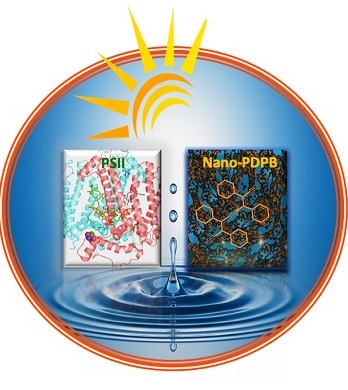In artificial photosynthesis, chemists are aiming to borrow principles from natural photosynthesis to develop photoelectrochemical cells (PEC) for water splitting. The water plastoquinone photooxidoreductase enzyme, also known as Photosystem II, uses light to perform the four-electron, four-proton oxidation of water to dioxygen and stores reducing equivalents in reduced forms of quinones which are ultimately used in dark reactions for the synthesis of energy-rich molecules.
Here, chemists report a nano-structured semiconducting conjugated polymer based on poly(diphenylbutadiyne) (nanoPDPB) and its photocatalytic activities towards the water oxidation reaction under visible light irradiation when dispersed in water in the absence of any sacrificial agents or co-catalysts. Charge recovery at the nano-PDPB directly or delayed in time was exemplified by the reduction of quinone acting as a hydrogen reservoir. In the absence of quinones as electron acceptor H2O2 formation was detected stemming from the partial reduction of O2.
Thus, scientists showed that nano-PDPB, a nanostructured semiconducting conjugated polymer, can replicate the complete processes undergoing in Photosystem II. Many challenges are ahead of them to unravel the photophysical processes and mechanistic aspects of these carbon-based materials.

This article has been selected by the
Chemical Science editorial team as a "Pick of the Week", that is, the review promotes a selection of its favorite articles by sharing them with the wider community of chemists through to its social networks, Facebook and Twitter in order to give them a high level of visibility.
It has also been the subject of a communication from the CRNS Institute of Chemistry (INC) published in the newsletter of the CNRS institutes "
En direct des labos"

Artist view © W. Leibl, A. Aukauloo/CEA, CNRS, UPSaclay